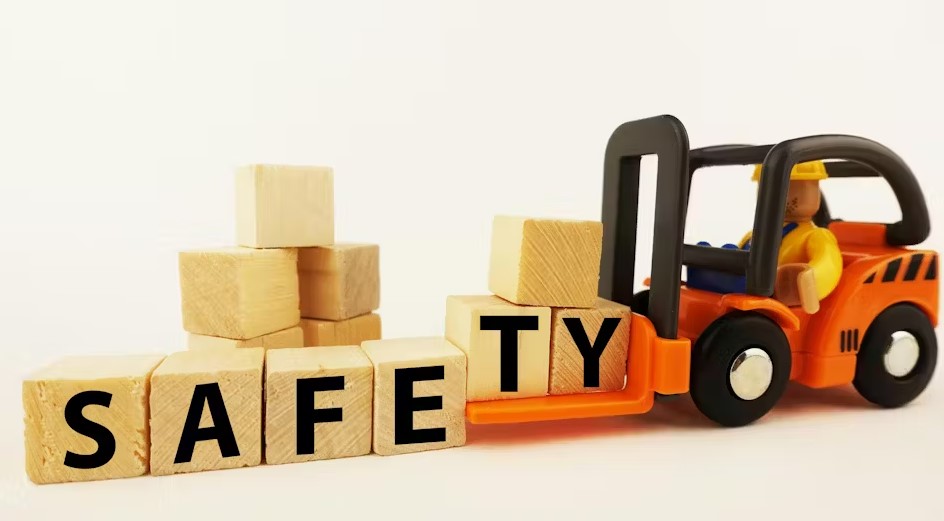Lessons Learned: Building Safety Culture from the Start
Originally Published by: EHS Today — June 12, 2024
SBCA appreciates your input; please email us if you have any comments or corrections to this article.
There’s always room for improvement.
James Wiedow, corporate EHS manager at NSI Industries, knows this all too well. He has spent much of his career as the first safety hire, so he’s aware of the heavy lift involved in building a culture of safety from the ground up.

He also has experience in finding what works with employees—and what doesn’t. The safety program de jour and technology may change, but the basics remain the same: You have to communicate clearly and openly about the problems, then work together to build the solutions. You can’t sugarcoat the work ahead, but you must make it clear these changes are for the better.
Wiedow, a 2016 recipient of the J.J. Keller Safety Professional of the Year (SPOTY) award, will share some lessons he's learned over the course of his career at the 2024 Safety Leadership Conference that’s taking place Aug. 26-28 in the greater Denver area. More information, including registration, can be found here. Below is a preview of what to expect from his presentation.

Photo courtesy of James Wiedow
How, where, and why do safety, trust, and credibility intersect?
I feel strongly that incorporating employees’ trust and credibility directly impacts safety results. Having employees comfortable and confident that you, as their safety representative, are the primary vehicle with safety knowledge and desire to create change will invariably lead others to support you, as opposed to having them alienate you. You follow people who you can trust, and you build trust through your credibility. Safety is a good fit for both.
How can just one person improve workplace safety?
Personally, as a leader, one person can always be effective. It is about listening to employees, taking actions, soliciting others to be involved, and understanding what actions immediately can be readily addressed—and what others will require time to implement.
You have been the first safety hire at a few companies. What are some of the things you started focusing on from Day 1?
I would first review all the documents the company had or did not have, including a review of their total recordable incident rate (TRIR) and days away, restricted or transfer (DART) rate so I would quickly obtain a pulse as to where they were in terms of recordkeeping compliance. Additionally, I would obtain their organizational chart and determine who is responsible for what department and who reports to whom so I would know who to address and proceed from there. I would start developing key relationships and taking steps toward building trust and credibility from Day 1.
Having spent much of your career as your employer's first safety hire, you are often in a position where you are implementing new practices, new procedures, and a whole lot of change. That can be scary for employees. How do you broach those conversations and take their concerns into consideration?
Change can often prompt some employee concerns and trepidation. I strongly believe that the primary skill a leader must possess and employ is genuine communication.
Yes, you are like an octopus with many tentacles to address and convey to employees. You need to communicate not only that they must adhere to regulatory procedures and policies but also how they will invariably make employees safer.
Writing programs, policies, and standard operating procedures (SOPs)—and implementing them—are time consuming. Never be reluctant to say that change will take time because there is no quick fix to safety. As I stated in my J.J. Keller presentation, “Safety is not like a faucet. You can’t just turn it on and off. It needs to be a continuously flowing waterfall and engrained in the company’s DNA.”
Safety techniques can be specific to an industry, a facility or even a machine. However, there are also some universal safety principles. What are some things safety professionals can do to improve workplace safety regardless of their specific situations?
There are a host of things and universal tools in the toolbox that are germane to all industries, including using relevant pictures, postings, emails, training materials, safety meetings and bulletins. Working in various industries like food, chemicals, fireproofing, medical and TV has allowed me to bring similar safety principles across the whole spectrum.
Workers want to be treated fairly—and with respect. Managers need to manage people, no matter what industry they’re in. Of course, workplace cultures can vary, but a safety professional’s challenge is to alter their approach to safety to best fit the culture.
What are some important things to keep in mind when you are starting a safety program from scratch or trying to revive a safety program?
I feel the first thing you should know is the actual commitment of leadership. This can be a sensitive and delicate topic.
You also have to ask yourself, and others, some difficult questions: Were you hired simply to check a box, to make cursory improvements? What is the reason they didn’t have a safety professional on staff prior to you coming on board? What is the reason you were hired? Was it to deal with the fallout from large penalties and notice of violations (NOVs)? Was it to deal with client concerns? Was it a result of leadership regime changes? Was it to be more aligned to compliance?
Knowing this will allow you to understand exactly where the company was, where it is presently and where it wants to go. Developing trust among senior leaders will provide for smooth sailing ahead. Speaking to senior management in credible terms avoids an adverse reaction of them ignoring your advice.
Managing safety often means that senior managers hear messages they would rather not hear. Be sincere. The best message a senior executive can send when he/she trusts your convictions is simply stated: “When my safety manager asks for something to be done, understand that to be a direct request from me.” Now that’s trust and credibility.
OK, let's say a few months or years have passed and the safety program is getting off the ground. You've even had some initial wins. What do you focus on next?
I’d go after some big-ticket items. Predicated on where we are, I would implement an electronic learning management system (LMS), safety management system (SMS) and an environmental management system (EMS). These will allow me to pull data and capture accidents, incidents, TRIR, training statistics and trends, safety data sheets (SDS), near-misses and inspections data. From there, I can build an interactive compliance calendar so due dates aren’t missed and responsibilities are assigned.
What are some things to consider when an established safety program is trying but isn’t achieving the desired results? Are there any ways to jump start the safety program like you would a car battery?
You must determine where the disconnect is. Examples include not offering bilingual training, not allowing enough time to take a course and not reporting timely incidents.
Again, it all comes down to communication and filtering down the responsibilities to managers and supervisors. This also means sharing bad news among the workforces. You must hold the responsible parties accountable for the lull in the process. You must also try to identify the weak links in the chain. To do this, you must make sure you’re measuring the right data that is producing the results.
How do you combat complacency?
Again, I feel it all comes down to communication. Be open with what you’re seeing. I will say this: Employee peer pressure, if done in the best interests of the employees, works.
Share the data and force improvement. For example, if one department is not conducting their daily 5S inspections, communicate that broadly. Post the inspection completion percentages. Most people want to be recognized for good work and not targeted as the problem.
It takes a lot of effort to move up the safety hill, and you do not want an organization to backpedal. How do you make sure a safety program is set up for long-term success and will continue to grow, mature and thrive (even after you might change jobs)?
Great question. Like any other department, this is all about goals and measurements with respect to key performance indicators (KPIs). There must be annual, but realistic and achievable, goals to ensure you are continually improving. This works in conjunction with sustainability. Use metrics to measure trends. Don’t backpedal by minimizing your goals.
Use technology to do this. Years ago, many programs and documents were retained via paper copies and would be lost or misplaced when someone, including regulators, requested it. In this digital world, you have a repository to store all your EHS data. If someone leaves, his/ her knowledge doesn’t follow him/her.
I’ve gone into organizations as an auditor performing due diligence acquisitions where the previous compliance person moved away, and the documents were scattered all over the place. In my 30-plus years of experience, the last thing you want to do is appear disorganized when an inspector shows up at your door. If you and your program give the impression your documents are not readily accessible and all over the place, you are lost before you even started. First impressions are everything, as they say, and perception is reality!
Whether you’re the first safety professional or the tenth person to hold that job, make sure you make an impression so everyone says, “That safety manager was good. He/she really added value day in and day out. We NEED a safety person on staff.”
What's one thing you hope attendees take away from your presentation at the Safety Leadership Conference?
Everyone, of course, is different. Some employees readily embrace, support and absorb change while others are reluctant. The point is, you will need to take the time, be consistent, be persuasive and, above all, have their reassurance and confidence that you are there to make it a safer and better workplace.
